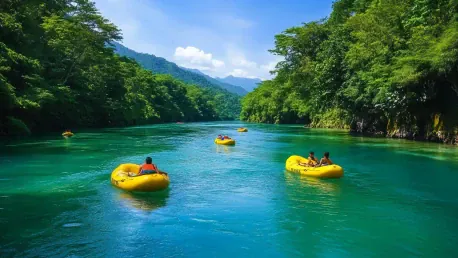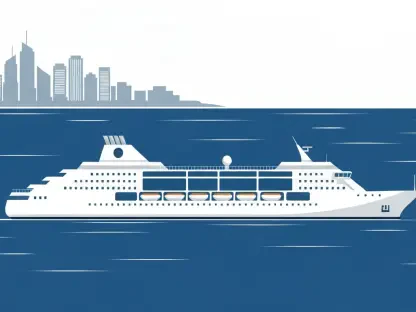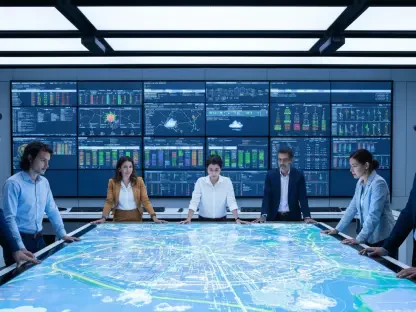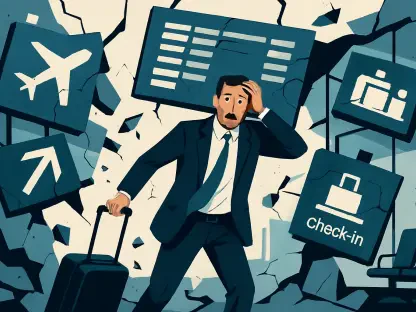The Philippines is making a concerted effort to boost its ecotourism appeal through enhanced travel links and a strong emphasis on sustainability. This initiative is transforming the nation’s pristine islands into major tourist attractions, including many areas that were once troubled by illegal fishing practices. One such area is Siete Pecados Marine Park, where Jose “Jojo” Mazo, born into a family of fishermen, has seen firsthand the dramatic transformation since the park’s establishment in 2005. This marine sanctuary, along with other parts of Coron Island and Palawan, has emerged from a dark history of destructive fishing practices to become a sought-after destination for ecotourism.
Transformation and Ecotourism Growth
Mazo’s hometown epitomizes how strategic management can turn illegal fishing grounds into thriving ecotourism hubs. The transformation of the area highlights a remarkable turnaround story, driven by the park’s management’s ecosystem-conscious approach. They have implemented strict rules to preserve the ecosystem, such as limiting daily visitors to about 100 and enforcing no-littering, no-fishing, and no-anchoring policies. These efforts have fostered an environment where nearly 40 percent of Coron’s workforce is now engaged in tourism, with many former fishermen finding new roles as part-time park guides. This shift not only bolsters the local economy but also signifies a broader community pivot towards eco-friendly practices.
The positive impact of ecotourism on the local economy is evident in how the community has embraced conservation efforts. The collected entrance fees and other tourism-related revenues, approximately USD 4,600 per month, are reinvested into the community through various projects, such as mangrove restoration and the acquisition of new boats for both fishing and tours. These initiatives benefit neighboring towns, enhancing the overall standard of living and fostering a deeper respect for environmental sustainability among the locals. The result is a flourishing marine park that stands as a model for other areas looking to balance growth with conservation.
Community and Environmental Sustainability
The community’s commitment to maintaining and enhancing environmental sustainability is evident through strict rules that emphasize conservation. These policies, such as banning littering, fishing, and anchoring within the marine park, play a crucial role in preserving the area’s natural beauty and biodiversity. The income generated from tourism, amounting to around USD 4,600 every month, is strategically reinvested into local projects. These projects include mangrove restoration and the acquisition of boats for both fishing and tourism, which not only benefit the park itself but also the broader region, enhancing local livelihoods and environmental health.
One of the most significant outcomes of these initiatives is the heightened environmental awareness and conservation practices among the community members. The local population, many of whom once relied on destructive fishing practices for their livelihood, have now become active participants in preserving their natural heritage. This shift in mindset is essential for the long-term sustainability of the park and its surrounding areas. By fostering a culture of environmental stewardship, the community ensures that future generations can continue to benefit from the natural resources that are so vital to their way of life.
Enhanced Connectivity and Opportunities
The strategic enhancement of travel connections has been pivotal in driving the influx of visitors to ecotourism destinations like Coron Island. Airlines like Cebu Pacific have introduced new direct flights that make these pristine locations more accessible to both domestic and international tourists. The increase in tourist numbers has, in turn, boosted local spending, providing the financial resources needed to fund new projects that improve the quality of life for residents. The improved connectivity between key regions, such as Coron and Metro Manila or Clark, has stimulated economic activity, opening new opportunities for growth and development.
President Ferdinand Marcos Jr.’s administration has been instrumental in pushing for enhanced domestic and international flight routes as part of a broader strategy to stimulate tourism. This approach includes efforts to rebrand island provinces like Central Visayas with eco-friendly goals, positioning them as premier ecotourism destinations. The Department of Tourism’s data underscores the success of this strategy, with international tourist arrivals in 2022 surpassing pre-pandemic numbers. The resulting revenue influx of USD 13 billion reflects the robust demand for eco-friendly travel experiences, boosting the local economy and emphasizing the importance of sustainable practices in the tourism sector.
Conservation Challenges
Despite the significant growth in tourism, this surge presents various environmental challenges that require immediate and careful management. Palawan’s state marine report underscores the detrimental effects of increased tourism activities on the local ecosystem. Issues such as pollution from boating activities, coral trampling by tourists, and other human interferences highlight the need for stringent regulations to protect the fragile marine environment. Conservationists, including Dr. Billy Tusker Haworth, advocate for the imposition of restrictions on certain activities and areas to safeguard critical species and habitats.
Education is key to ensuring compliance with these protective measures. Tourists must be made aware of the impacts of their actions on the environment and be encouraged to adopt sustainable practices. The Indigenous Tagbanua tribe in Palawan sets an excellent example by enforcing strict visitor limits, requiring pre-booked visits, and imposing dive time restrictions to protect the endangered dugongs. These measures help balance tourism growth with the need to preserve the natural habitats that make these destinations so attractive in the first place.
Management Lessons from Boracay
Boracay serves as a cautionary tale of over-tourism and its consequences. The island’s temporary closure in 2018 brought to light the severe infrastructure and environmental issues caused by unchecked tourist influx. Challenges like inadequate waste management, frequent blackouts, and poor sanitation facilities plagued the island, prompting a comprehensive evaluation of its tourism practices. Although measures were implemented to cap visitor numbers and improve infrastructure, the post-pandemic period saw decreased tourist arrivals, which adversely impacted local livelihoods, showcasing the delicate balance between tourism and sustainability.
Proposals such as building a bridge to connect Boracay to the mainland raised concerns about further exacerbating the island’s capacity and environmental issues. Critics argue that addressing waste and water management problems should take precedence over expansion plans. This debate highlights the necessity of sustainable growth and the careful consideration of environmental impacts when planning tourism infrastructure projects. Boracay’s experience underscores the importance of learning from past mistakes and implementing long-term strategies to ensure that tourism efforts do not come at the expense of environmental integrity.
Leveraging Renewable Energy
Bohol’s investments in renewable energy resources, such as the Dagohoy Solar Power Project, illustrate how the demands of sustainable tourism can be met while minimizing environmental impact. This solar power initiative supports the island’s infrastructure needs in an eco-friendly manner, reducing dependence on fossil fuels and contributing to a greener future. By integrating solar energy into their tourism plans, Bohol demonstrates a commitment to sustainable practices that other islands can emulate.
Proposals to incorporate renewable energy solutions across more islands in the Philippines offer a promising path toward sustainability. By aligning tourism infrastructure with eco-friendly goals, these initiatives can help preserve the natural beauty that draws visitors to these destinations. The adoption of renewable energy sources not only supports the environment but also ensures that the tourism industry can continue to thrive without depleting the natural resources that are central to its appeal.
Financial Sustainability and Market Trends
The Philippines is making significant strides in enhancing its ecotourism appeal by improving travel connections and focusing heavily on sustainability. This drive is turning the country’s untouched islands into prime tourist spots, including territories that previously suffered from illegal fishing. A notable example is Siete Pecados Marine Park, where Jose “Jojo” Mazo, who comes from a fishing family, has witnessed the park’s remarkable transformation since 2005. This marine sanctuary, along with other regions of Coron Island and Palawan, has moved away from its troubled past of destructive fishing practices. These areas have now become popular destinations for ecotourism, attracting visitors who are keen on experiencing natural beauty while supporting conservation efforts.
The turnaround in places like Siete Pecados is particularly striking. Fishermen who once relied on harmful practices for their livelihood now partake in protecting the marine environment. This pivot not only helps preserve marine biodiversity but also offers sustainable economic opportunities for local communities. The success of these initiatives is drawing global attention, positioning the Philippines as a leader in responsible tourism and environmental stewardship. By committing to these sustainable practices, the nation balances ecological preservation with tourism, ensuring that its natural wonders can be enjoyed by future generations.









